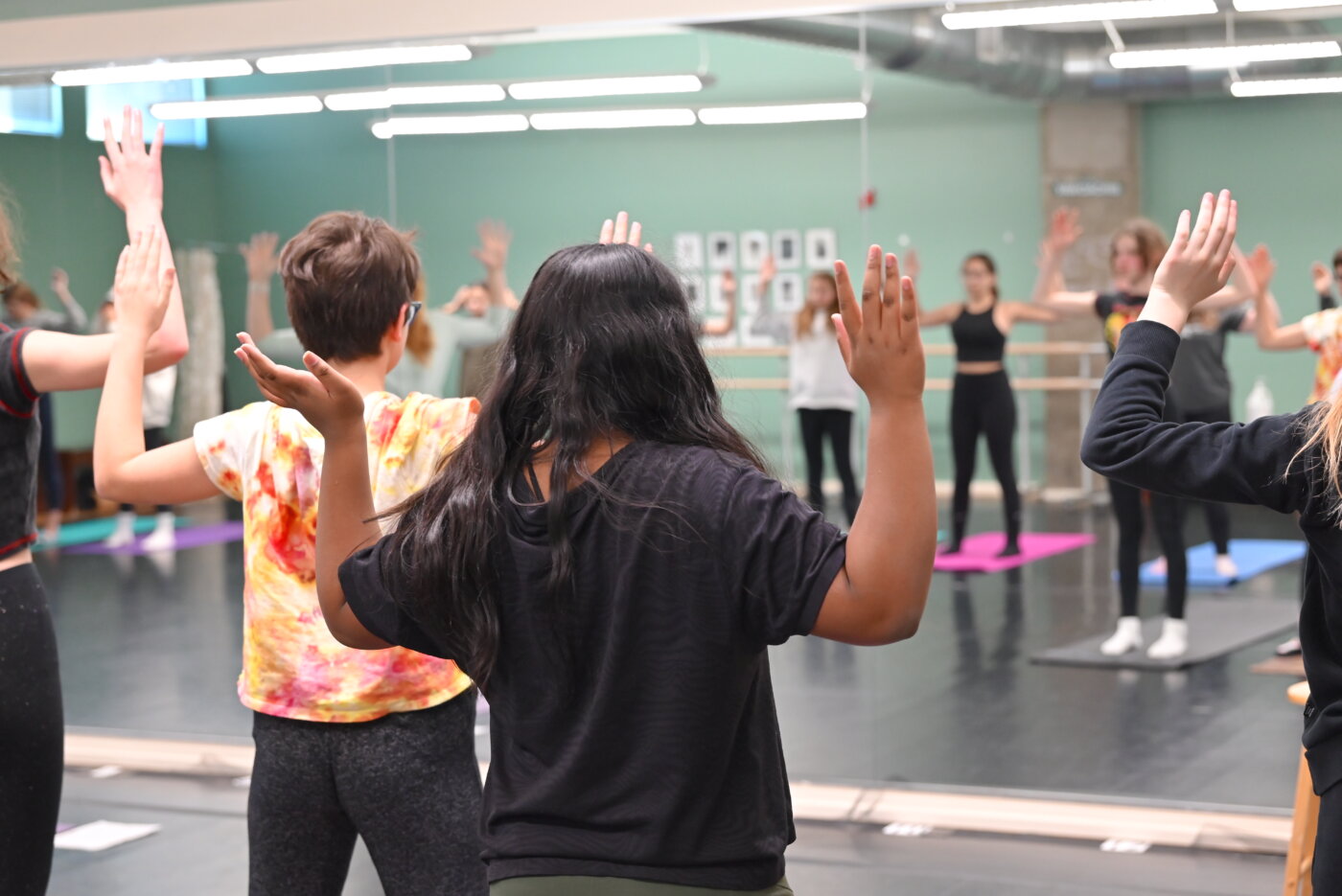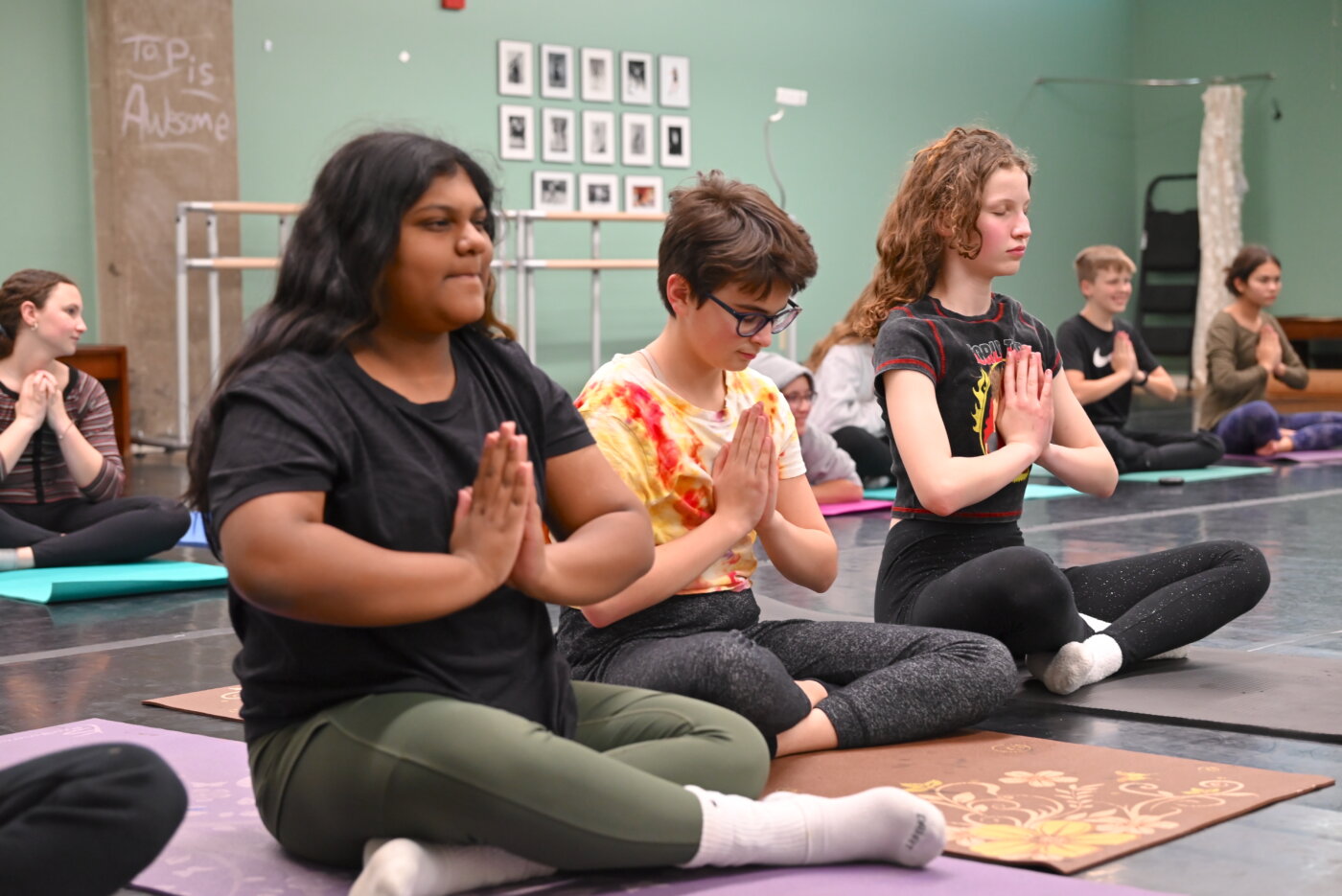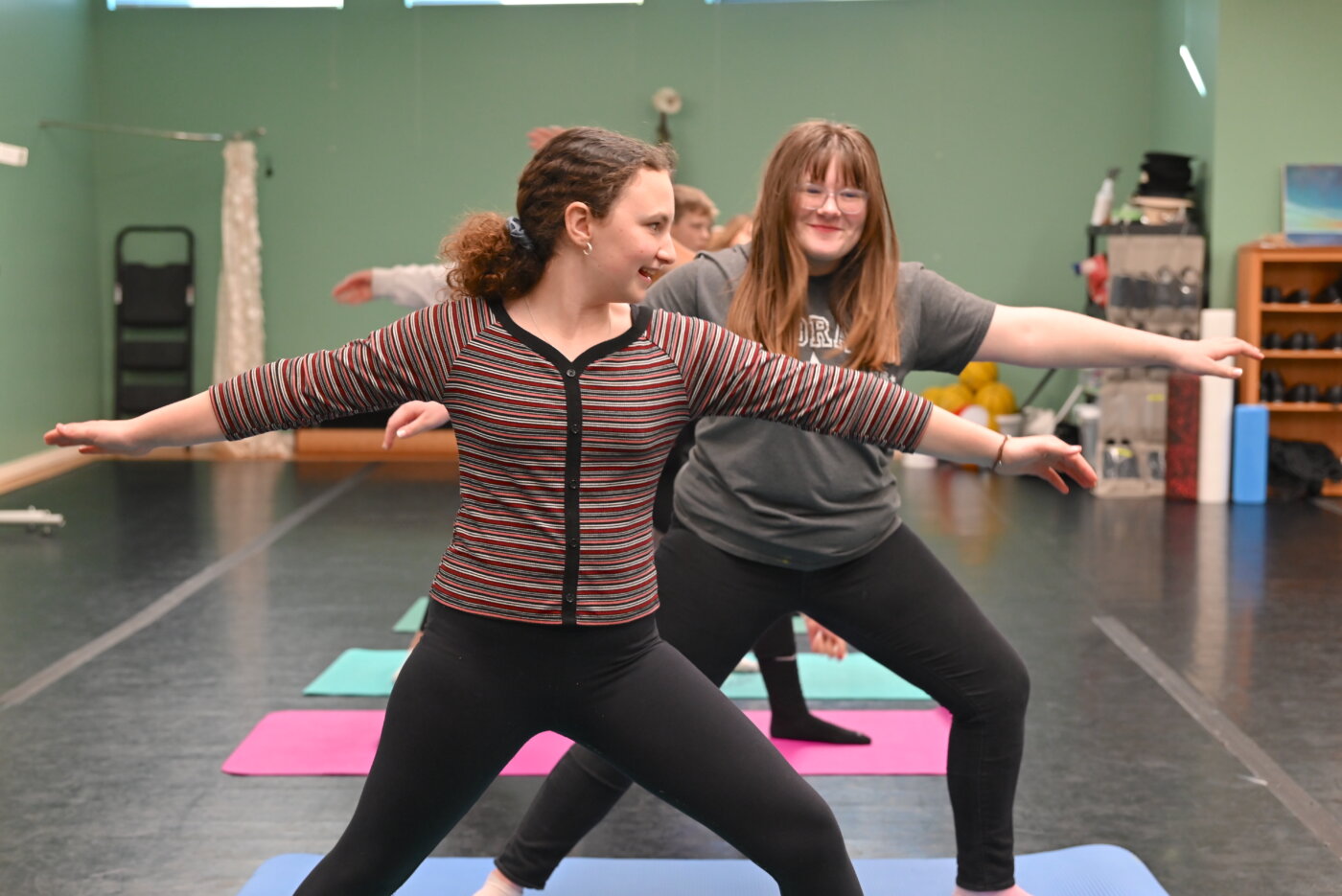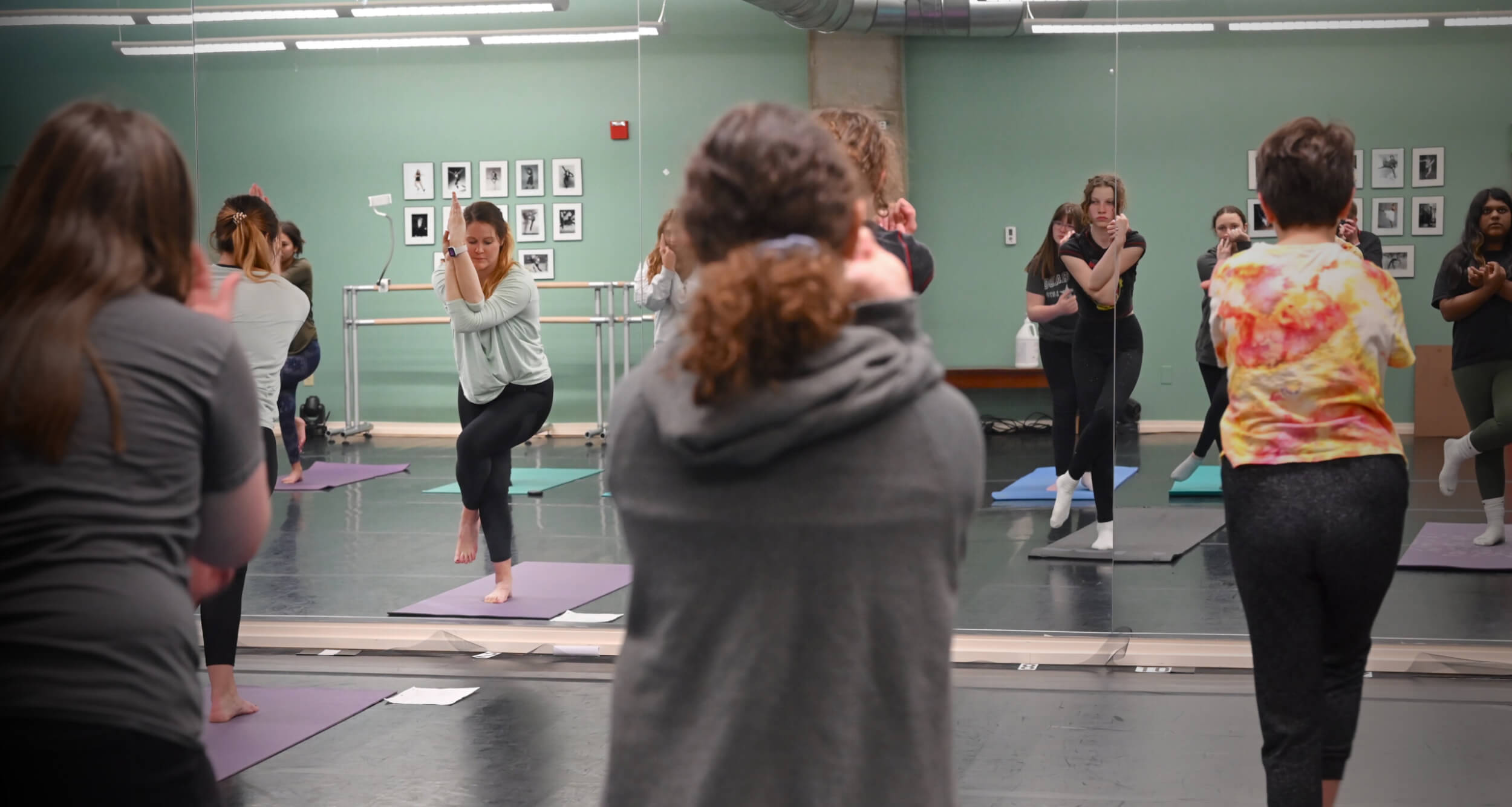On winter afternoons at Colorado Academy, Middle Schoolers eagerly make their way to the lower level of the Schotters Music Center, where in CA’s dance studio they get a chance to breathe, flex, and focus on physical and mental wellness through the practice of yoga.
Led by Lower and Middle School physical education teacher and coach Caitlin Simbeck, the yoga sessions are a new but increasingly popular option in the Middle School P.E. program, which requires every student to participate in a school sports offering each trimester of the year. With an initial enrollment of just a handful of students at the start of the season, yoga now attracts as many as 18 athletes on any given day, several of whom are there to take a “break” from other Middle School winter sports such as basketball or climbing.

For these drop-in participants, as well as the growing core group of practitioners, says Simbeck, yoga offers a holistic approach to wellness in which individuals can set their own goals and find success on their own terms.
“In more ways than one, yoga is so good for Middle Schoolers,” Simbeck says. With her degree in exercise science and prior professional experience as a group exercise instructor, Simbeck explains that yoga can bring benefits like improved balance, strength, endurance, and aerobic capacity—along with less tangible pluses, such as a sense of belonging and self-acceptance.
“At this age, so many of our students are trying to find their place, discover what they’re good at and what they can thrive in, and they might not always find that in traditional or team sports,” says Simbeck. “In my yoga class, I’ve had students come to me to say this is the first time they’ve ever enjoyed a sport. I’ve had others who I know are going through a hard time tell me the class has helped with their mental state. Through yoga, these students have discovered a community of like-minded people where everyone belongs.”
Agrees Eighth Grader Ana Delgado, “Coach Caitlin is really supportive, and if you tell her something that’s going on, she’ll help you figure it out. Even if it’s just been a really long day, I can let her know, and she’ll do an extra long savasana [‘Corpse’ pose—ideal for rest and relaxation]. It’s a really good way to decompress after a hard day at school.”
In a typical session, Simbeck leads students through a sequence of asanas, or poses, along with breath and meditation exercises. Class begins with an opening pose that encourages participants to be present in the moment and set an intention for their practice. Sun salutations, such as the familiar Downward-Facing Dog, then warm up the muscles, and a variety of poses and movements open the chest and hips, twist the spine, and invert the extremities above the heart. Each day also includes a challenge pose, to give students something to work toward. Classes conclude with an embryo pose—signifying new beginnings—and finally “namaste,” the traditional South Asian greeting and sign of respect, peace, and presence.

“After a long day of work and other stress factors,” says Eighth Grader Alegría Monterroso, “it’s really nice to just let all of that go during yoga class.”
Fellow Eighth Grader Aubrey Armstrong explains, “For me, it’s very rejuvenating, especially for after-school activities. It gives me energy. It’s also just nice to have that time to be with yourself and connect with your body.”
Points out Seventh Grade figure skater Cezanne Kumpe, “Usually I don’t have time to stretch and do exercise at home, so it’s really nice that I get to do something for my body during school.”

According to Simbeck, the daily yoga classes align well with the overarching goals of the CA Athletic Department, whose mission is to ensure that healthy physical activity plays a central role in enhancing the student experience and the school community. Research also shows that yoga can improve focus, memory, academic performance, and classroom behavior, and can even reduce anxiety and stress.
Especially for students who are always “on,” whether it’s in the classroom or on a digital device, Simbeck says, “Taking the time to slow down and recenter can be critical; practicing yoga can give young people social emotional tools that will help them be more successful. That’s what really makes it worth it—the way yoga brings together mind, body, and spirit is something everybody can do, and everybody can benefit from.”
There are even “Mindful Mondays,” during which Simbeck introduces techniques—such as paying attention to the five senses and focusing on the breath—that specifically address stress and anxiety. As Seventh Grader Farah Arnold attests, these sessions are “a really great reset in the middle of the day.”
For the athletes who come to yoga from other sports like basketball and climbing, the practice offers a restorative approach to fitness that comes with its own big dividends. According to Simbeck, “Yoga can help prevent injury, enhance flexibility, and provide rest and relaxation—all things that will improve these athletes’ performance once they’re back out on the court or the climbing wall.”
That each individual’s yoga practice is unique is part of the beauty of the sport, explains Simbeck. “Whether my students are focused on improving themselves physically, quieting their mind, or just relaxing, yoga offers them a path to do just that.”
